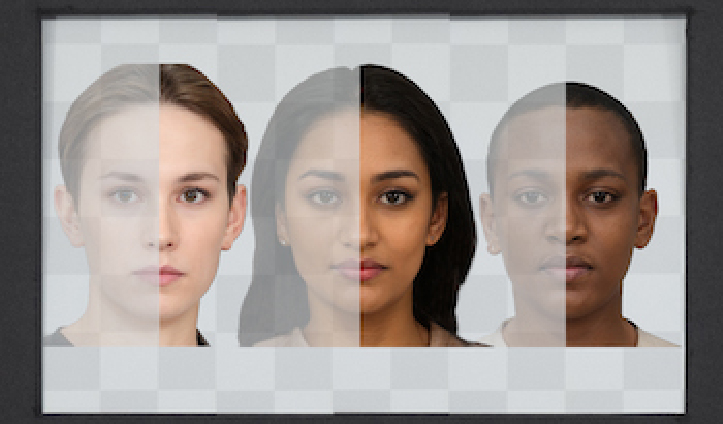
Augmented reality (AR) combines elements of the real world with additional virtual content, creating a blended viewing environment. Optical see-through AR (OST-AR) accomplishes this by using a transparent beam splitter to overlay virtual elements over a user’s view of the real world. However, the inherent see-through nature of OST-AR carries challenges for color appearance, especially around the appearance of darker and less chromatic objects. When displaying human faces—a promising application of AR technology—these challenges disproportionately affect darker skin tones, making them appear more transparent than lighter skin tones. Still, some transparency in the rendered object may not be entirely negative; people’s evaluations of transparency when interacting with other humans in AR-mediated modalities are not yet fully understood. In this work, two psychophysical experiments were conducted to assess how people evaluate OST-AR transparency across several characteristics including different skin tones, object types, lighting conditions, and display types. The results provide a scale of perceived transparency allowing comparisons to transparency for conventional emissive displays. The results also demonstrate how AR transparency impacts perceptions of object preference and fit within the environment. These results reveal several areas with need for further attention, particularly regarding darker skin tones, lighter ambient lighting, and displaying human faces more generally. This work may be useful in guiding the development of OST-AR technology, and emphasizes the importance of AR design goals, perception of human faces, and optimizing visual appearance in extended reality systems.

Augmented reality (AR) combines elements of the real world with additional virtual content, creating a blended viewing environment. Optical see-through AR (OST-AR) accomplishes this by using a transparent beam splitter to overlay virtual elements over a user’s view of the real world. However, the inherent see-through nature of OST-AR carries challenges for color appearance, especially around the appearance of darker and less chromatic objects. When displaying human faces—a promising application of AR technology—these challenges disproportionately affect darker skin tones, making them appear more transparent than lighter skin tones. Still, some transparency in the rendered object may not be entirely negative; people’s evaluations of transparency when interacting with other humans in AR-mediated modalities are not yet fully understood. In this work, two psychophysical experiments were conducted to assess how people evaluate OST-AR transparency across several characteristics including different skin tones, object types, lighting conditions, and display types. The results provide a scale of perceived transparency allowing comparisons to transparency for conventional emissive displays. The results also demonstrate how AR transparency impacts perceptions of object preference and fit within the environment. These results reveal several areas with need for further attention, particularly regarding darker skin tones, lighter ambient lighting, and displaying human faces more generally. This work may be useful in guiding the development of OST-AR technology, and emphasizes the importance of AR design goals, perception of human faces, and optimizing visual appearance in extended reality systems.